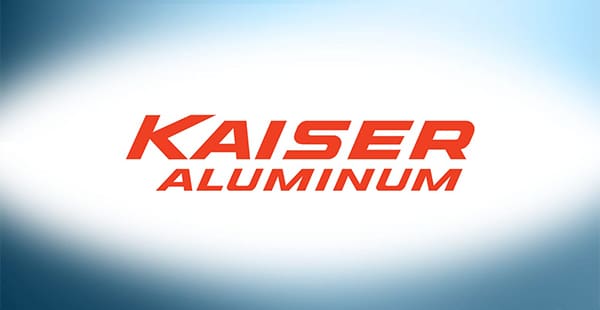01. History of Asbestos Use
Kaiser Aluminum History of Asbestos Use
Kaiser Aluminum made and sold asbestos products from 1959 to 1978. Many different industries used its insulation, construction and refractory materials. Workers in these industries and at Kaiser Aluminum plants faced asbestos exposure risks.
Henry J. Kaiser founded the company in 1946 in Washington state. Within the next few years, the company went public and became Kaiser Aluminum and Chemical Corporation. It soon became a leading provider of aluminum and aluminum products.
The company’s aluminum had a range of uses, from making TV dinner trays to constructing the famous Air Force Academy Cadet Chapel.
The 1950s saw the company expanding its offerings. In 1959, it produced its first asbestos products. The company used asbestos in many of its plants throughout the United States. By the end of 1978, the company had stopped using asbestos. During the time it made asbestos products, Kaiser Aluminum expanded in the United States and abroad. In 1967, company sales surpassed $2 billion.
Beginning in the late 1970s, asbestos victims began taking legal action against Kaiser Aluminum. By 2002, the company had faced approximately 247,000 asbestos lawsuits. That year, it declared bankruptcy. In 2006, the company established an asbestos trust fund to pay out current and future victims.
Resources for Mesothelioma Patients
02. Asbestos Products
Kaiser Aluminum Asbestos Products
Kaiser Aluminum made asbestos products from 1959 to 1978. During the 20th century, many companies made products with asbestos. The mineral was valued for its strength and heat resistance.
Kaiser Aluminum sold its insulation and refractory materials under its own name and other brand names. A previous division of the company sold “Mirawal” asbestos building materials.
In 1968, Kaiser Aluminum sold raw asbestos to companies in New Jersey, New York, Pennsylvania and Texas.
03. Occupational Exposure
Kaiser Aluminum and Occupational Exposure
People who used and worked with Kaiser Aluminum asbestos products may have experienced occupational asbestos exposure. Its products were present at construction sites, chemical plants, shipyards and other jobsites. Some of these products may still be present in older buildings.
The Kaiser Aluminum trust lists nearly 700 jobsites around the country that used its asbestos products. This approved jobsite list may not reflect the full extent of exposure risks. Some Kaiser Aluminum asbestos products may still be unidentified. The trust also lists more than 400 occupation combinations in different industries that may have led to exposure.
Kaiser Aluminum employees who made or worked around asbestos products also faced exposure risks. By the late 1960s, the company operated 196 plants in over 34 states and had roughly 90,000 employees.
People exposed to asbestos from Kaiser Aluminum products may develop asbestos diseases, like mesothelioma and lung cancer. These diseases may develop decades after exposure.
04. Asbestos Litigation
Asbestos Litigation Against Kaiser Aluminum
Beginning in the late 1970s, Kaiser Aluminum faced lawsuits from asbestos victims. These victims alleged the company’s products led them to develop asbestos diseases. When the company filed for bankruptcy, it faced over 100,000 unresolved asbestos lawsuits.
Lawsuits may result in mesothelioma settlements or jury verdicts. Approximately 97% of Kaiser Aluminum lawsuits ended in settlement awards. A settlement is an agreement an asbestos victim makes with a company to end a lawsuit for a specified amount of money. In general, mesothelioma settlements average $1 to $1.4 million.
In one case, a paper mill worker sued Kaiser Aluminum and others after developing pleural mesothelioma. Kaiser Aluminum and several other asbestos companies settled with the patient for over $700,000.
The company’s asbestos liabilities sometimes exceeded $100 million a year. Kaiser Aluminum also predicted it would face over $600 million in future asbestos litigation costs. It filed for bankruptcy in 2002.
The bankruptcy proceedings against the company halted lawsuits against it. Its trust now handles all asbestos claims arising from Kaiser Aluminum asbestos products.
05. Asbestos Trust Fund
Kaiser Aluminum Asbestos Trust Fund
In February 2002, Kaiser Aluminum filed for Chapter 11 bankruptcy. In its filing, it cited several reasons for reorganizing, including falling aluminum prices and high asbestos liabilities. The company emerged from bankruptcy in 2006. As part of its final bankruptcy plan, it created an asbestos trust to pay out all current and future claims.
The trust was initially funded with about $1.22 billion. In its first year of operation alone it spent more than $53 million in asbestos claim payouts.
The current payment percentage for successful claims is 15.5%.
The Kaiser Asbestos Personal Injury Trust has a current payment percentage of 15.5%. An asbestos victim’s occupation, age and disease severity may also impact how much individuals receive from the trust.
Lawyers at experienced mesothelioma law firms can file trust claims on behalf of victims. They can also help mesothelioma patients and family members explore all their legal options. Many patients experienced exposure from multiple sources. Asbestos attorneys can help identify all possible exposure sources and find out whether victims may seek compensation from them.




